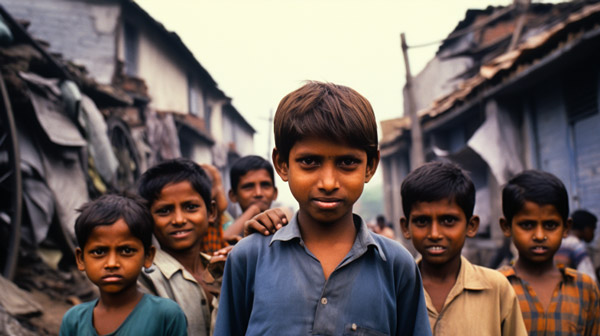Understanding The Cause Of Homelessness In India & Nepal
Approximately 70% of India’s population lives in rural areas with 54% dependent on agriculture for their living. Unfortunately, the drought rate in India has increased significantly – by 57% since 1997. From just 2020-2022 drought affected nearly two-thirds of the nation. In just the last 10 years, one-third of the country has experienced four droughts. That’s approximately 50,000,000 people every year who have been severely hindered from generating income or having food.
When these events occur, it is common for men to leave their families in search for food. Many young people sell their bodies just to make enough money to survive, and children often run away to the city only to find the world they hoped for doesn’t exist. In these communities, traffickers are perceived less as criminals and more as saviors because they bring the “hope” of provision and remove the “burden” of children.
The average adult in India has only 5 years of education, with 80% of the entire population living on just 200 rupees ($2.50) per day. So, children that do migrate to cities often find they can provide for themselves better through collecting cans, washing windows, and pick-pocketing than most adults. However, they must spend the money they earn the same day. If they try to save the money it is usually stolen by other kids, makes them a target to adult criminals, or is “confiscated” by police. Homeless and hungry children often join a sub-culture of “street boys” that do whatever it takes to get a little money and food each day so it can immediately be spent on entertainment, specifically video games, movies, and cheap “drugs”; sniffing glue, paint, or other inhalants. The most “successful” street boys often don’t know that using inhalants is dangerous and rarely live through their teen years. Conditions for girls in the street are often much worse, as they commonly experience physical and sexual abuse, are bullied or mugged by the boys when they do get food or money, and are easily kidnapped by traffickers and sold as sex slaves. It’s estimated that 16 of the 20 million current “prostitutes” in India are victims of such trafficking. The average life expectancy of a trafficking victim is 7 years.
Dawas Ministries provides feeding shelters and outreach programs to meet the the basic needs of street kids. By providing education and foster homes, we are advancing the fight against child trafficking. As we build relationships with each child, they are empowered to escape poverty and break the cycle of homelessness.

